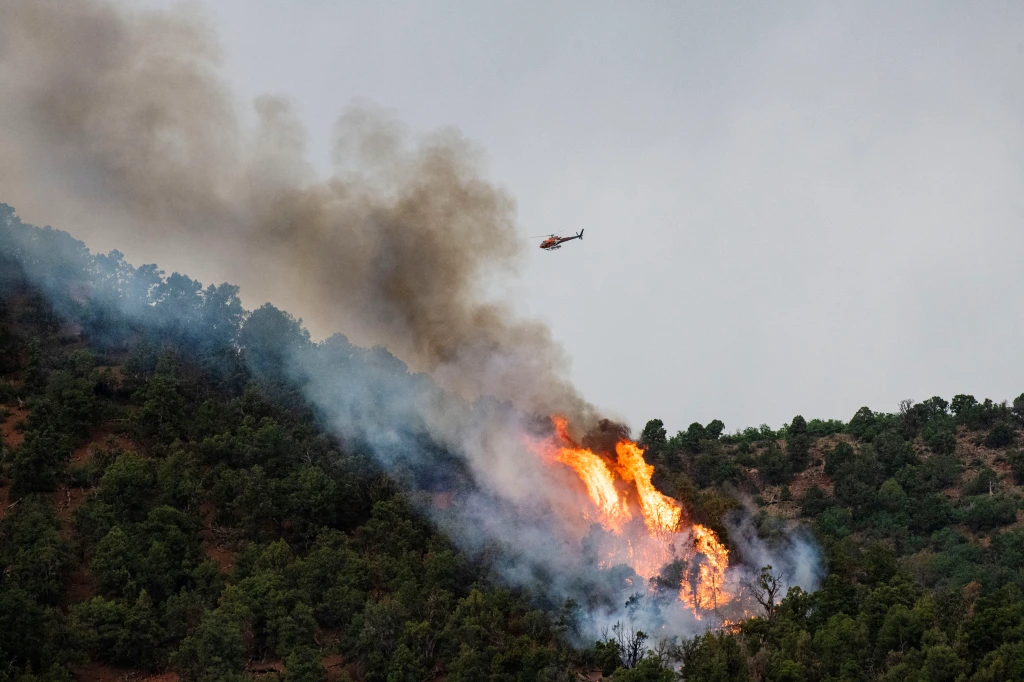Wildfire Prevention Strategies for Homeowners
Wildfires are an all too prevalent reality for those of us who reside in the Wildland Urban Interface (WUI) in Colorado. Alongside the supreme beauty of the area comes the near certainty of experiencing some form of wildfire at some point in time. In fact, if you reside in a WUI, which is an area where human structures interact with wildlife habitats, it's not a question of if but when you will be affected by a wildfire as a property owner. Thankfully, you can protect your property and investments from wildfires by planning ahead and taking action to reduce the risk they pose.
How Real is wildfire Risk for your home?
According to the Colorado State Forest Service, more than half of all Colorado residents currently live with some wildfire risk. Just recently, in Boulder alone, there were 991 homes lost. This showcases the very real threat wildfires present to those of us who call this majestic area home.
be sure your home is Insured properly
There are many ways to protect your home against the risk of wildfire, decreasing your chances of experiencing property loss through this manner. However, above all else, it’s important to make sure that your home is properly insured with a homeowner’s insurance policy.
Wildfire damage is usually covered by most homeowners' insurance policies, but you need to make sure that it is listed coverage in your policy. It’s a good idea to speak with your insurance agent on an annual basis to go over the coverage you need to adequately protect your home.
Wildfire Damage Insurance
In most policies that include wildfire damage coverage, you can expect the following types of coverage within your policy:
- Damage to the building or main dwelling structure. Your home, in other words.
- Additional structure damage. This could include sheds, stand-alone garages, etc.
- Landscaping, pools, and backyard items. Let’s not forget the expense that you can incur trying to replace your outdoor furnishings and especially a pool after a wildfire. This can add up to a big loss.
- Additional living expenses if you are unable to live in your home during repairs or replacement, etc.
- Building-code upgrade coverage to ensure that your new or remodeled home meets all current code standards.
- Personal property and contents. This includes all those many items that make up the interior of your home from your furnishings to your collectibles and more.
Do Your Part to Reduce Your Risk
While it’s important to have the right insurance coverage in place to protect your property and belongings, you also want to do what you can to reduce the risk of wildfire affecting your home.
This isn’t a one-and-done type thing either, as wildfire prevention many times comes down to home maintenance that needs to be kept up on a regular basis. Some tasks, like ensuring that your lawn is kept under control and weeds are not allowed to grow, along with cleaning out gutters need to be done several times a year to ensure that your home is adequately protected.
In addition, it takes more than just doing what you can to increase your own home’s fire resistance. It’s also a good idea to work alongside other residents to ensure that communities embrace various strategies for combating the risk of wildfires. Homes and infrastructures are more likely to survive a wildfire if all landowners work together to reduce fire hazards in and around communities.
Best Wildfire Mitigation Strategies
Now that we have considered the importance of combating wildfires not only as homeowners but as communities, it’s important to identify some specific strategies that can help mitigate the risk overall of ever experiencing a wildfire:
- Your roof should be classified as Class A for fire resistance. This gives you a little more protection if a wildfire gets close to your property.
- Make sure you clean your decks, roofs, and gutters of leaves, needles, and other debris. Otherwise, you are creating kindling for a building fire.
- Install ⅛ inch metal mesh, screen attics, roofs, eaves, and foundations vents. This creates a more protected environment.
- All window glass should be tempered and preferably include two or more panes.
- Ensure there is at least six inches of vertical clearance between the ground and the siding.
- Replace combustible fencing and gates within five feet of a dwelling. This will obviously reduce the risk of spreading if a wildfire gets close to your property.
- Keep up with the weather and drought conditions and know your area’s current risk for wildfire at all times.
- Avoid any activities that could cause fires or sparks when conditions are dry, windy, and hot. This includes setting off fireworks, starting campfires, and more.
- Avoid building campfires near your property, instead if you want to build a campfire, make sure that you do so in an open area of land. Keep a close eye on the fire while burning and make sure it is completely out once you are done. Use water to douse your campfire.
- Avoid driving on dry grass as even a tiny spark can set off the dreaded wildfire.
- Ensure that your vehicle is in good working condition and not leaking any substances that could be possible fuel for a fire. Of course, you also want to make sure that you can leave the area if there is a need to evacuate, so make sure your car is working well.
- Keep dry vegetation protected.
- Don’t burn debris in the wind.
Prevention is up to You
Preparing a property for wildfire is your responsibility as the homeowner. Thankfully, you can minimize the risk of wildfires for your property by creating and maintaining wildfire prevention strategies like those outlined above.
Here are some additional resources from the Colorado State Forest Service that will be helpful in doing what you can to protect your home in the event a wildfire happens near you:



